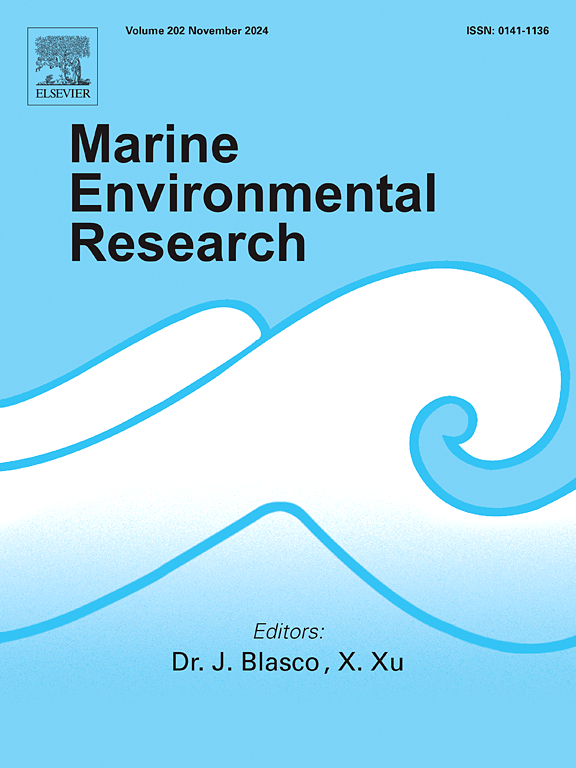Lasting impacts of rapid salinity change on physiological energetics of estuarine oysters (Crassostrea hongkongensis)
IF 3
3区 环境科学与生态学
Q2 ENVIRONMENTAL SCIENCES
引用次数: 0
Abstract
The duration of rapid salinity change (RSC) prevailing in estuarine and coastal regions is increasing due to extreme climate and weather events, posing significant challenges to marine bivalves. The Hong Kong oyster (Crassostrea hongkongensis), an ecologically and economically important species in tropical estuarine ecosystems, has experienced increasing mass mortality during prolonged periods of RSC, yet little is known about underlying physiological processes. Here, we investigated how physiological energetics of C. hongkongensis were affected by longer-lasting scenarios and four-week episodes of RSC. Compared with ambient conditions with seawater salinity ranging from 15 to 20, rapid salinity change by ± 10 units significantly decreased the survival of oysters, with RSC-induced hyposaline stress (−10) resulting in more serious consequences than that of hypersaline regime (+10). Continuing exposure of oysters to both RSC scenarios significantly affected their feeding activities, but the food absorption efficiency were still virtually unchanged. Significantly depressed respiration and increased excretion activities were observed in RSC-stressed oysters, resulting in significantly lowered O:N ratio. Overall, when exposed to RSC, oysters showed significantly decreased scope for growth, due to shifts in energy budget toward maintenance of essential physiological processes. Our results demonstrate the vulnerability of estuarine oysters to prolonged RSC events, and underscore the pressing need to develop strategies to enhance oyster tolerance under intensifying RSC conditions and safeguard oyster aquaculture in this era of unprecedented climate change.
求助全文
约1分钟内获得全文
求助全文
来源期刊

Marine environmental research
环境科学-毒理学
CiteScore
5.90
自引率
3.00%
发文量
217
审稿时长
46 days
期刊介绍:
Marine Environmental Research publishes original research papers on chemical, physical, and biological interactions in the oceans and coastal waters. The journal serves as a forum for new information on biology, chemistry, and toxicology and syntheses that advance understanding of marine environmental processes.
Submission of multidisciplinary studies is encouraged. Studies that utilize experimental approaches to clarify the roles of anthropogenic and natural causes of changes in marine ecosystems are especially welcome, as are those studies that represent new developments of a theoretical or conceptual aspect of marine science. All papers published in this journal are reviewed by qualified peers prior to acceptance and publication. Examples of topics considered to be appropriate for the journal include, but are not limited to, the following:
– The extent, persistence, and consequences of change and the recovery from such change in natural marine systems
– The biochemical, physiological, and ecological consequences of contaminants to marine organisms and ecosystems
– The biogeochemistry of naturally occurring and anthropogenic substances
– Models that describe and predict the above processes
– Monitoring studies, to the extent that their results provide new information on functional processes
– Methodological papers describing improved quantitative techniques for the marine sciences.
 求助内容:
求助内容: 应助结果提醒方式:
应助结果提醒方式:


